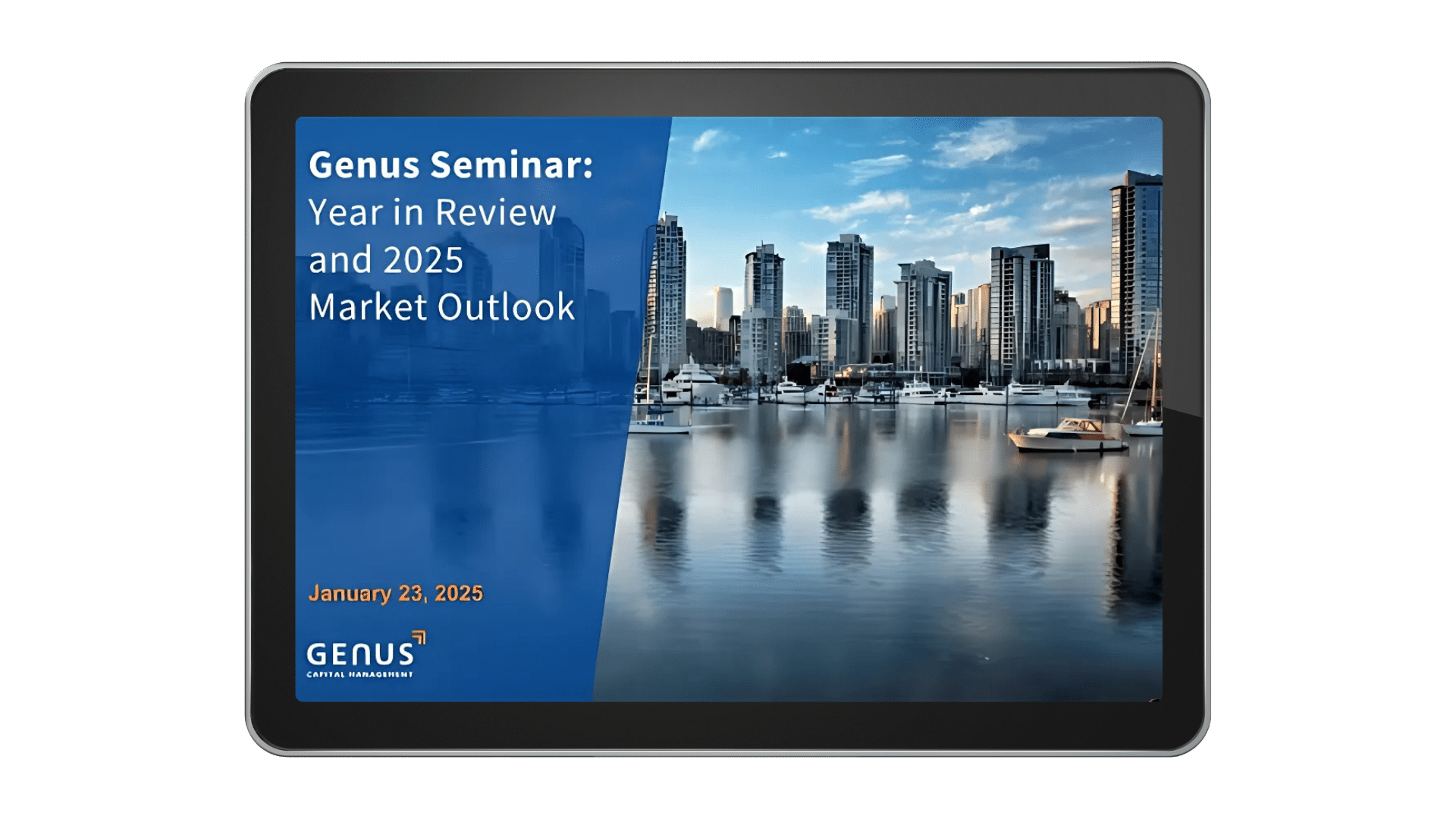If you inherited your investment advisor from your parents, opened your brokerage account when you were much younger, or are looking for a level of wealth management service you haven’t been getting, then switching investment advisors may be on your mind.
For many people, current economic and global events have also prompted a reevaluation of financial priorities – in fact, 83 per cent of Canadians are rethinking their financial plans due to growing economic uncertainty.
If this sounds like you, you might be interested in a recent webinar (now available for replay) on how to switch investment advisors. Hosted by our partner Tim Nash at Good Investing, and featuring Genus Portfolio Manager Darryl Brown, the webinar highlights considerations and steps to getting informed about a move that can sometimes feel like balancing gain versus pain.
Here are some of the key concepts they covered – and why you might want to consider starting the process of switching investment advisors.
The main reason people switch investment advisors
People switch investment advisors for a wide variety of reasons, but in Nash’s view, most investors initiate a move because they’re not satisfied with the service they’re getting. “Some investment advisors act more like sales people,” he says, adding that there should be a good relationship between you and your advisor – one in which they check in with you regularly to ensure you’re both aligned. “Do they care about what’s going on in your life – like family changes, job changes or changes to your health and well-being?” Brown added. These are important factors to consider if you’re thinking about a switch.
Some people may have a good relationship with their advisor, but may need to switch due to a change in circumstances: a move, a job or business change, or even retirement. For others, it may be more about financial considerations. In that case, understanding the fees you’re paying – and the expected returns – is critical to making the right decision for you.
Understanding fees and tax implications

Every wealth manager comes with fees. Understanding the main types of fees will help you to make an informed decision. Nash recommends asking about the advisory fee, as well as the management fee that comes with each investment product. Investment management fees can vary based on the advisor, services and products offered, and it’s important to understand the fee structure and compare options. Depending on your current fee structure and the advisor you choose, switching advisors may provide opportunities for different fee arrangements. Be sure to compare fees and services carefully.
Nash also advises exploring the tax implications of moving your money if your investments aren’t in registered accounts. This is when it may be advisable to get an accountant involved, and explore options for moving investments over in kind or staggering transfers to limit capital gains fees. “For more complex situations, it can help to have a team work with your advisor,” Nash says.
Common fears about moving to a new wealth manager

No matter how much of your nest egg you’re considering moving, it can be nerve-wracking to trust someone new with your investments. The most important thing, Nash says, is to “find a comfortable landing place.”
Start reaching out to advisors to set up consultation meetings. Get a good feel for what they’re offering, and whether they align with your values and priorities. If you’re looking to add values-aligned investments to your portfolio, consider how to start that conversation.
Nash recognizes that there may be some guilt in “breaking up” with an advisor – especially if it’s the same one your family or friends work with. But he assures that “advisors are used to this” – it’s a business relationship, and not one that has to last a lifetime.
Some investors may feel nervous about the process of moving their funds – a process that can take days or weeks. But again, Nash assures that the process is safe and effective. Nonetheless, “finding someone who is waiting to receive you and your funds on the other side is helpful,” he adds.
Ready to switch wealth managers? Follow these steps

Here are the steps to follow if you’ve decided you’re ready to switch financial advisors:
- Meet with potential advisors: Don’t just rely on the first recommendation you get. Set up some meetings with potential advisors and see how they approach a consultation. “These are like a first date,” Nash says. “They let you do a vibe check. How good are they at listening? Are they approaching the meeting like a sales pitch?” A good advisor should take the time to understand how best they can support your needs – including any gaps in your investing journey. And there are some red flags to look for: they talk over you, don’t listen and promise outsized returns with minimal risk. “Keep in mind that 2024 was a great year for the market, but that is not the expectation going forward,” Brown adds.
- Choose your advisor and open your new account: This step will be admin-heavy, but your advisor will walk you through it. They’ll need to collect all of your pertinent information, along with some potentially obscure pieces such as SIN numbers of your beneficiaries. Your advisor will put all the paperwork together in the required format.
- Initiate the fund transfer: This is also something your new advisor will take care of. You’ll simply need to work with them to determine whether the transfer will be in-kind (ie: RRSP to RRSP or TFSA to TFSA) or in-cash (selling off existing investments and adding the cash proceeds to the new account to be invested). Before transferring investments, consider potential tax implications, transfer costs and whether a temporary change in market exposure could affect your portfolio.
- Send your current advisor a courtesy email: While this step is certainly not required, it’s common courtesy to let your old advisor know that you are going elsewhere. Again, keep in mind that they’re used to this, and there’s no need to feel badly about it.
- Wait for the fund transfer to occur: Note that this can take anywhere from five to 15 business days – or sometimes even longer depending on where your investments were. “We’ve found that it’s been a bigger challenge with online brokerage accounts,” Brown says, “as they often don’t have the same level of service and support staff so transfers can take longer.”
Once that’s done, congratulations: you’ve got yourself a new wealth manager! Be sure to meet with them at least annually, and keep them apprised of changes in your circumstances, goals and personal investment philosophy.
Switching investment advisors is a significant decision that may provide an opportunity for different service models, fee structures and investment strategies. Careful research and consultation with a qualified professional are recommended to ensure the best fit for your financial needs. Before making a change, consider potential tax implications, transfer fees and the impact on your investment strategy.
Interested in making a positive impact with your investments? Explore our values-based investment services. today.
Investment products are subject to market fluctuations and risk. Past performance is not indicative of future results. Investors should review all terms, fees, and risks before making any investment decisions.
References:
Canadians are rethinking their financial plans. (n.d.). Chartered Professional Accountants Canada. Retrieved April 4, 2025, from https://www.cpacanada.ca/news/Analysis/bdo-economy











